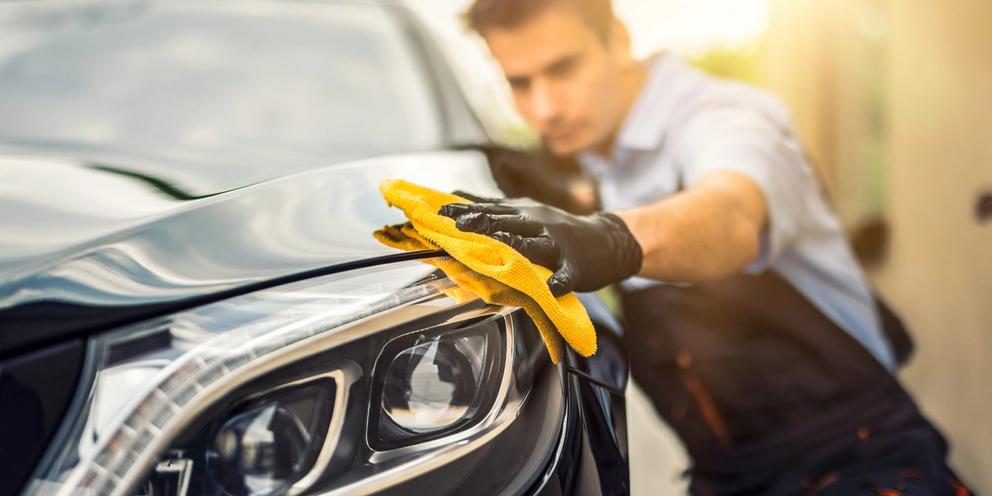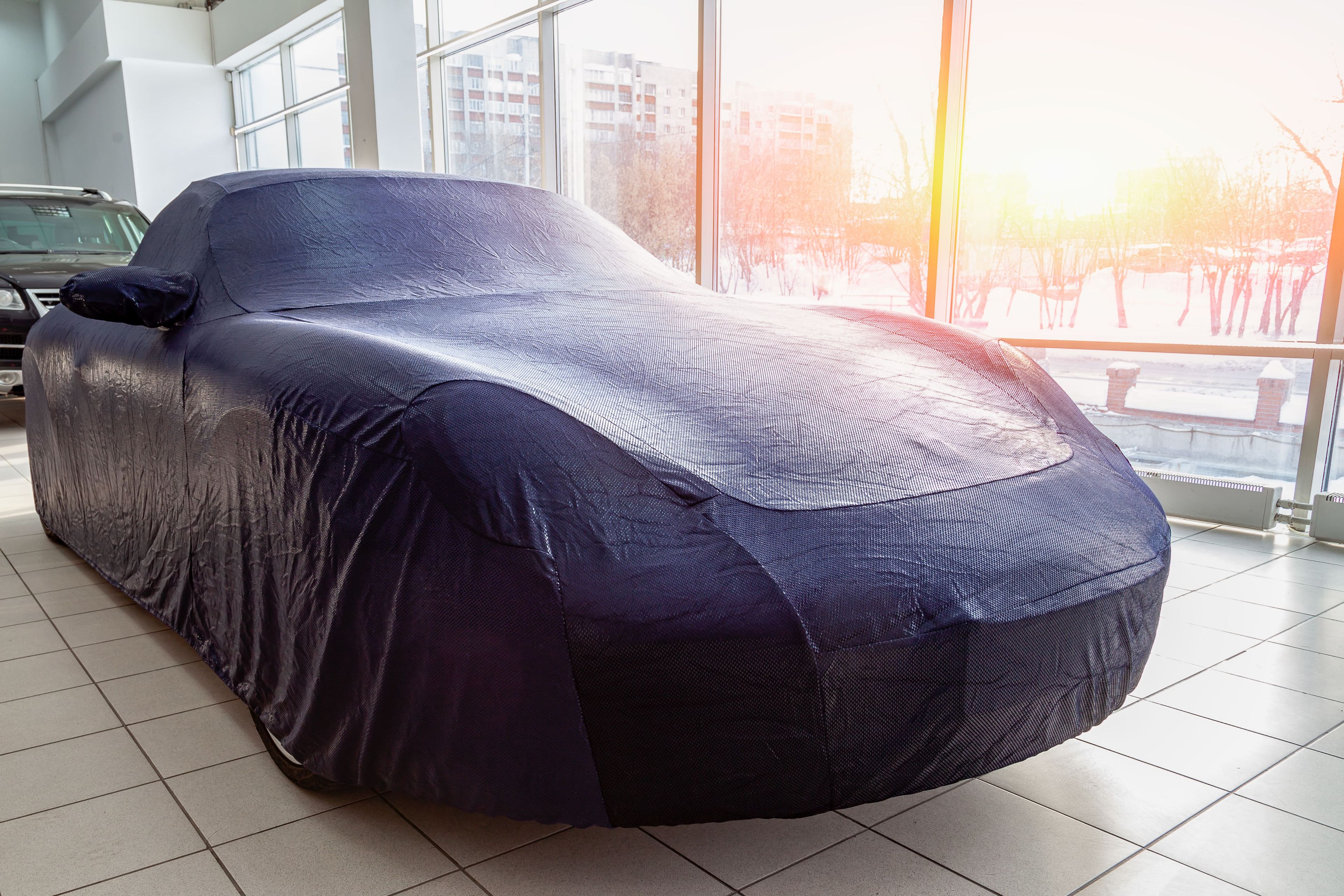
How to Detail a Car Exterior: Best Practices & Expert Tips
Source: REDPIXEL.PL / Shutterstock.com
Most car owners take pride in their vehicle’s condition, inside and out. When routinely cleaning the car, many drivers pay careful attention to the car’s interior, removing crumbs, dust, and grime from nooks and crannies while giving the outside a wash and rinse. However, detailing your car’s exterior is just as vital as maintaining the interior. Not only does external detailing make your car look better, but it also protects the vehicle, increasing its market resale value. Our guide takes you through the best practices and expert tips for detailing a car. Learn to prioritize car maintenance and incorporate it into your schedule.
Ensure You Have the Right Supplies
The first step of car detailing is gathering the products and tools. Where possible, choose quality materials because cheap products can damage your car’s paintwork. Tools you need for detailing the exterior of your car:
- • Two buckets
- • Washing mitts or sponges
- • Soft-bristle cleaning brush
- • Foam cannon
- • Car wash shampoo
- • Wheel cleaner (optional)
- • Auto polish
- • Car wax
- • Buffing cloth or automatic handheld buffer
- • Microfiber towels
Keep Your Car Safe with a Car Cover

Source: Virrage Images / Shutterstock.com
Clean the Wheels
As the point of contact with the road, the wheels have the deepest layers of build-up. Use the cleaning brush and a bucket of diluted wheel cleaner to remove debris from the tire tread. You may need to roll your car forward periodically to access all the tire’s surface area.
Wash the Car Exterior
Before applying the soap, rinse the car thoroughly with a hose to remove loose dirt and debris. When washing the car, work section by section and top to bottom to avoid soap residue and streaks. For the best results, it’s best to use a low-pH car wash shampoo, as it can safely remove inorganic soils like salt and sand without scratching the exterior.
A foam cannon is one of the best ways to cover your vehicle’s large surface areas in a short amount of time. This allows you to sponge clean the car quickly and easily without letting the soap dry. Alternatively, use a two-bucket system; one bucket with soapy water and another with clean water. Use a sponge and soapy water to clean a section of the car, working from top to bottom. Then rinse the sponge in the bucket of clean water before dunking it in the soapy water again. This removes grime from the sponge, so it doesn’t go back on your car paint.
Once your vehicle is clean, use a microfiber towel to dry it. These towels are soft and very absorbent, reducing the likelihood of staining and pooling. Although you might not care about subtle water spots, they can contain corrosive elements.
Clean the Windows, Mirrors, and Lights
The glass elements of your car’s exterior need special attention. Standard detergents can leave smudges and streaks on the glass, impeding visibility. Leave the windshield, windows, mirrors, and lights for last, and use a specially formulated auto glass cleaner. You can use a squeegee and soapy water to remove debris from the windows and a small toothbrush to clean lights but always finish with a spray-on window cleaner. Apply the spray to the cloth, not directly on the glass, to prevent the spray from dripping into the mirror housing or window winding mechanisms. Use small circular motions to clean the glass.
Keep Your Car Safe with a Car Cover
Polish and Wax
Polishing and waxing completes the detailing process, giving your vehicle a smooth mirror-like appearance. When polishing, use a foam pad to apply the polish in small circular motions, and then buff with a cloth for the best results.
If you use an electric orbital buffer, apply a small amount of polish to the buffing pad and rub it into the car surface without switching on the machine. This spreads the polish more evenly and prevents splatter. Switch on the buffer and buff the car using even pressure, working from the front to back so you don’t over-polish a section, as the abrasive particles in polish may scratch your paint.
Wax gives your vehicle an added layer of protection. It is available in spray, paste, or liquid forms. Although the paste version gives the longest-lasting protection, the spray is the easiest and most convenient to use. Car wax works best when applied at a relatively cool temperature, so avoid waxing in direct sunlight or sub-zero temperatures. Wax can also be applied with an electric orbital buffer, but make sure that you change the pads between polishing and waxing.

Source: Aleksandr Kondratov / Shutterstock.com
Protecting Your Vehicle
Don’t let your hard work go to waste after detailing. It’s essential to keep your car looking great for as long as possible, not just the day of detailing. One of the best ways to protect the exterior of a vehicle is with a car cover. A car cover prevents weather and debris from damaging the paint and metalwork. Natural elements not only dirty your car, but they can cause corrosion and rust, which is often irreparable.
At CarCovers.com, our semi-custom covers come with three layers of protection, including a soft liner to protect your paintwork and a water-resistant layer to prevent moisture damage. Use a cover that features an elastic hem for easy installation, and attach a gust strap if you live in areas with high winds to prevent the cover from blowing away.
Going the Extra Mile for Your Vehicle
Making an effort to maintain your car’s condition can go a long way in keeping its value high. By performing the detailing at home, you avoid paying out professional detailing fees. What’s more, it gives you a sense of pride and achievement. Protect your vehicle’s exterior with a car cover. Visit CarCovers.com and browse our selection of semi-custom and custom products. Each of our covers comes with a warranty.
Updated